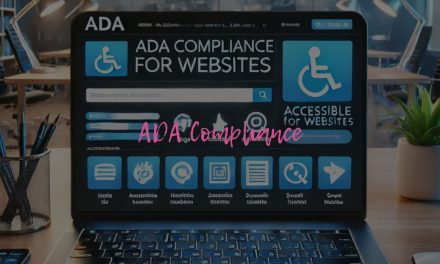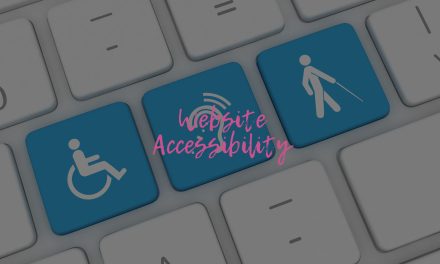Blogging 103: How to Make A WordPress Website
Creating a website nowadays is quite easy, unlike in the past, when you will have to find yourself a programmer or web developer to build it from scratch by writing lots of code. The process has been simplified since the introduction of WordPress, and with it, you can set up your website or blog within thirty minutes or less once you get the hang of it. WordPress is a content management system (CMS) that enables people to create and manage their site/blog easily with the installation of its free, open-source code.
More and more websites are built using WordPress, with about 36% of the top 1 million prominent sites were designed using this software. It is preferable among content management systems and eCommerce because of its flexibility and the benefit of being managed by a non-programmer. Moreover, it provides tools and plugins that make Search engine optimization easier and enables bloggers to relate better with their audiences.
I hope by now, you have no doubt in choosing WordPress. This article is about to offer you some guidelines on how to launch your WordPress website without undergoing stress. So, get your laptop or smartphone connected to the internet, and let’s set up a website for your business or a blog for your blogging career.
1. Purchasing a domain name
The first thing to do is to buy a domain name. A domain name is your website name, and it also represents the name by which internet users find and access your website. A domain name is made of two parts: the second-level domain (SLD) and top-level domain (TLD), also known as the domain extension. Take www.mywebsite.com; for example, the SLD is “mywebsite” while the TLD is “.com.” The “www” is a sub domain which I will not get into the details now but use it for your website.
Choosing the right domain name is the first step in setting your marketing campaign straight on the internet. With a good domain name, readers won’t find it hard to locate your business or blog. Moreover, it can help you rank higher on SERPs for queries.
To choose a better domain name, you need to follow specific rules. The most important of all is to select a branded domain name, that’s the name that must suit your business perfectly and showcase the kind of service you offer.
Another great tip is to buy a domain of the .com extension. Because most people are not very familiar of other extensions like .net, .edu, or .cake for business websites, but they are familiar with .com. Therefore, choosing other extensions may reduce your chance of getting traffic or someone entering .com for your brand and it leads them to a completely different company.
Your domain name should be short, and you try to avoid the use of double letters. Moreover, you can include keywords to have an SEO optimized domain name. For a good selection, you can research your niche to see what others are using. Meanwhile, you can also try some options out using a generators like Lean Domain Search.
Having gotten an idea for your domain name, you can proceed to the highly recommended NameSilo or any other reputable registrar company to purchase it.
2. Choosing a hosting company
Now that you have purchased your domain name, the next thing is to host your website on a server. A web hosting firm is a company that manages a server on which you can keep your website files. Your website contents, images, and videos are retained on this server for search engines to access on the internet.
Web hosting companies also provide services such as web security, maintenance, software and hardware updates, and customer service. If you are just getting started, the easiest and most popular is cPanel shared hosting.
With so many hosting sites around, a business might find it challenging to know which one to use. Meanwhile, others are calm by presuming that all offer the same services and produce the same result. However, that assumption is very incorrect and has cost some more than their budget.
The first mistake usually committed by people is hosting a website on a company from which they got their domain name. They don’t often commit this deliberately, because the method is very convenient. The problem is you are at a higher risk of losing all your investments and energy at once, if the server gets hacked, if there is an outage or your account gets banned.
It’s a regular thing that servers get hacked on the internet. It’s also very much possible that you experience some problems using a server because you will be sharing the space with some other website users. However, having your domain name and hosting server in different places will guarantee security. In the sense that you can quickly move your files to another host when a problem arises on the one you are using without losing traffic because your domain name will still be active.
In choosing a web hosting, you must be careful to read through their features and understand the service offered by their packages. Almost, if not all of the hosting sites available nowadays offered shared hosting. It means that you will be sharing the same server with other websites. Shared hosting is very cheap, but it is also problematic because of all the sites on a server experience an error that one user triggers on the server. Therefore, it’s usually better to go for vps or dedicated hosting where you will be in full control and ownership of the server. Managing a server has it’s own complexities so it is usually a need that evolves over time when performance becomes a priority.
Other things to consider before choosing a hosting package are bandwidth, reliability, price, storage capacity, interface, and customer support. And don’t purchase a plan until you read enough reviews from users because it’s only through them you can know if they genuinely deliver on their promises.
3. Upload / Install WordPress
There are a lot of processes to pass through before you reach this stage. Summarily, you will have to fill in some information about yourself, the website, your existing domain name, and your payment details to have an account with the server. Then you will automatically be taken to your account, or given a link through which you can log in into your account using your username and password.
Now that you have access to the server, the next thing is to upload the CMS of your choice. Some hosting plans has WordPress installed already on your server while some will give you the option to select and install the CMS of your choice. You can do that the hard way by manually by downloading and uploading WordPress installation files and creating a database. Most shared hosting will have a simpler one click option on cPanel using Softaculous that is available on your server to automate the process. The customer support may also help you install your first site.
4. Choosing a theme
Uploading WordPress to your website can be likened to making the framework and foundation of a house. The paintings, floor design, and interior decoration of a building is the theme of a website. Uploading a theme to your website is not hard and can be achieved under a few clicks. Moreover, there are lots of options to select from depending on the niche your website belongs to. You can decide to select one from the free but powerful Twenty Twenty theme available on WordPress or go get your premium theme from the likes of Elegant Themes or Envato ThemeForest. Always go for something that you can get support with or has a large community available to assist. Therefore I recommend going with Divi by Elegant Themes; Divi has over a million installations.
To add your free theme, navigate to Appearance on the backend of your WordPress dashboard, and then, Themes. Proceed on by clicking on the “Add New” button to browse through the free WordPress themes and install the one that best befits your site. Adding your premium theme will require some additional steps. The first thing is to buy and download the theme, and then follow the same path (Appearance > Themes > Add New). But this time, you are going to select “Upload Theme” and drag or pick the theme’s zip file from your computer.
5. Customize your website
Now that you have added your theme and probably upload some plugins to improve the functionality of your site. The next thing is to begin the fun by designing and improving the theme to your taste. At this stage, you can also add some pages to your websites like the about page, and the service pages. And using the page feature, you can launch your first blog. There is more to do in this stage all you just have to do is to browse and get accustomed to the backend of your WordPress website.
The premium themes also offer more customization options. However, to be in full control you have to read the documentation or view the instructional videos that comes with the theme file.
You might want to hide your website until you are done with the content and design. Using a popular plugin such as WP Maintenance Mode will help with that.
6. Launch the site
Having done all that is listed above, the only remaining thing is to set the Google analytics of the site to track the traffic that comes into the site. Before you launch, you will like to see what you have done live from the front end perspective. Therefore, you should type your website URL in a browser, and access it the normal way you have been doing for other sites. If you are satisfied, you can return back to your account and launch the site. But if otherwise, probably you still want to add some more content until you are satisfied. Turn off maintenance mode when you are ready to accept visitors.
Conclusion;
You might not be expecting something this easy, but I am confident that you can now set up your own WordPress site. All these can be done within 30 minutes, or 1 hour at most. I will be expecting your story about how process went. And feel free to get more explanation by using the comment. I wish you have a wonderful experience creating your WordPress website.
P.S. If this seems a bit overwhelming and you want to get a site up in 5 minutes and start on step 4, then go straight to WordPress directly by clicking here.








